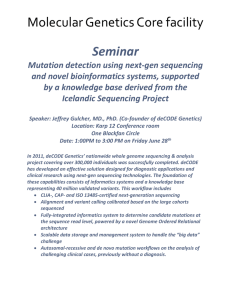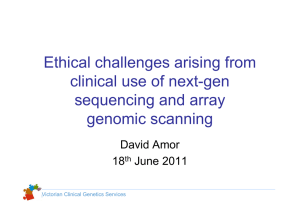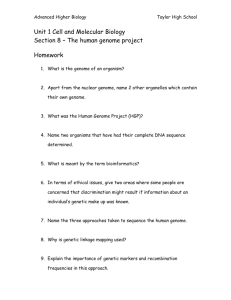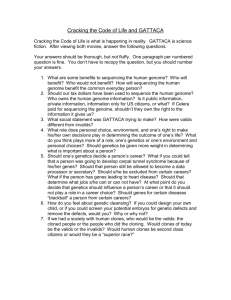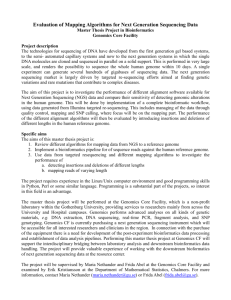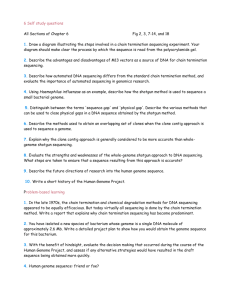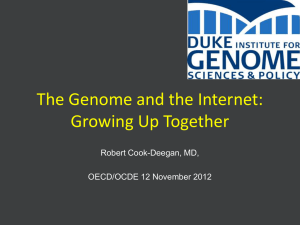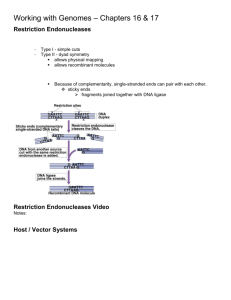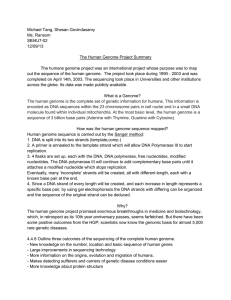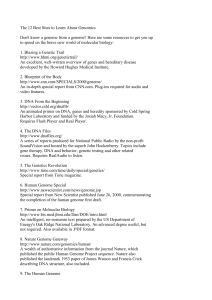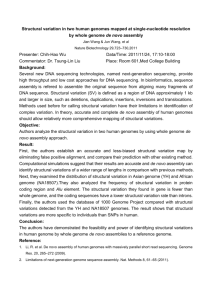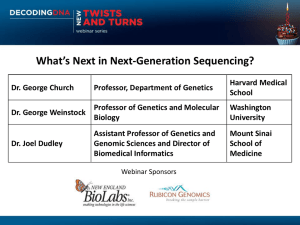SciAm04
advertisement
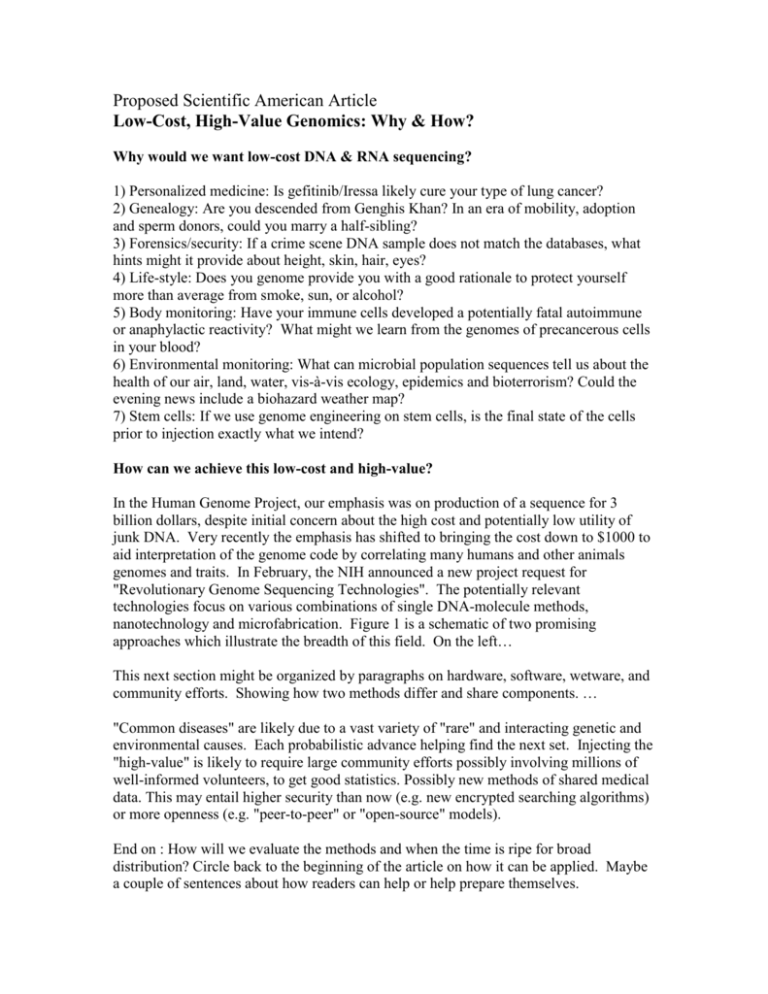
Proposed Scientific American Article Low-Cost, High-Value Genomics: Why & How? Why would we want low-cost DNA & RNA sequencing? 1) Personalized medicine: Is gefitinib/Iressa likely cure your type of lung cancer? 2) Genealogy: Are you descended from Genghis Khan? In an era of mobility, adoption and sperm donors, could you marry a half-sibling? 3) Forensics/security: If a crime scene DNA sample does not match the databases, what hints might it provide about height, skin, hair, eyes? 4) Life-style: Does you genome provide you with a good rationale to protect yourself more than average from smoke, sun, or alcohol? 5) Body monitoring: Have your immune cells developed a potentially fatal autoimmune or anaphylactic reactivity? What might we learn from the genomes of precancerous cells in your blood? 6) Environmental monitoring: What can microbial population sequences tell us about the health of our air, land, water, vis-à-vis ecology, epidemics and bioterrorism? Could the evening news include a biohazard weather map? 7) Stem cells: If we use genome engineering on stem cells, is the final state of the cells prior to injection exactly what we intend? How can we achieve this low-cost and high-value? In the Human Genome Project, our emphasis was on production of a sequence for 3 billion dollars, despite initial concern about the high cost and potentially low utility of junk DNA. Very recently the emphasis has shifted to bringing the cost down to $1000 to aid interpretation of the genome code by correlating many humans and other animals genomes and traits. In February, the NIH announced a new project request for "Revolutionary Genome Sequencing Technologies". The potentially relevant technologies focus on various combinations of single DNA-molecule methods, nanotechnology and microfabrication. Figure 1 is a schematic of two promising approaches which illustrate the breadth of this field. On the left… This next section might be organized by paragraphs on hardware, software, wetware, and community efforts. Showing how two methods differ and share components. … "Common diseases" are likely due to a vast variety of "rare" and interacting genetic and environmental causes. Each probabilistic advance helping find the next set. Injecting the "high-value" is likely to require large community efforts possibly involving millions of well-informed volunteers, to get good statistics. Possibly new methods of shared medical data. This may entail higher security than now (e.g. new encrypted searching algorithms) or more openness (e.g. "peer-to-peer" or "open-source" models). End on : How will we evaluate the methods and when the time is ripe for broad distribution? Circle back to the beginning of the article on how it can be applied. Maybe a couple of sentences about how readers can help or help prepare themselves. The Author: George Church is Professor of Genetics at Harvard Medical School, Director of the Lipper Center for Computational Genetics, US Department of Energy Genomics Center, and NIH Center for Excellence in Genomic Sciences. His research spans and integrates technologies for analyzing, modeling, designing and synthesizing DNA, RNA, proteins and cells. He has 10 issued US patents and has been scientific advisor to over 20 companies. More to Explore: Advanced Sequencing Technologies: Methods and Goals. Shendure J, Mitra R, Varma C, Church GM (2004) Nature Reviews of Genetics 5:335-44. Revolutionary Genome Sequencing Technologies http://grants.nih.gov/grants/guide/rfa-files/RFA-HG-04-003.html




